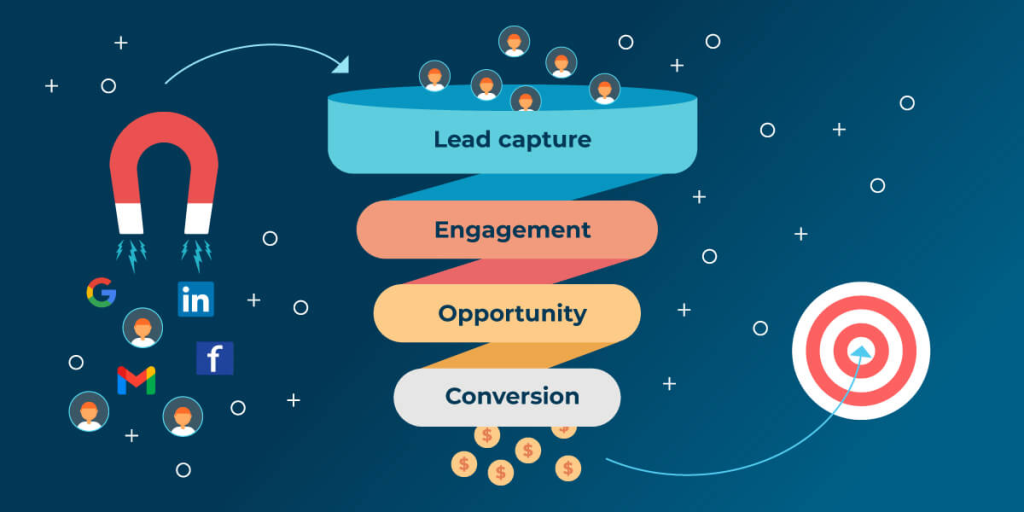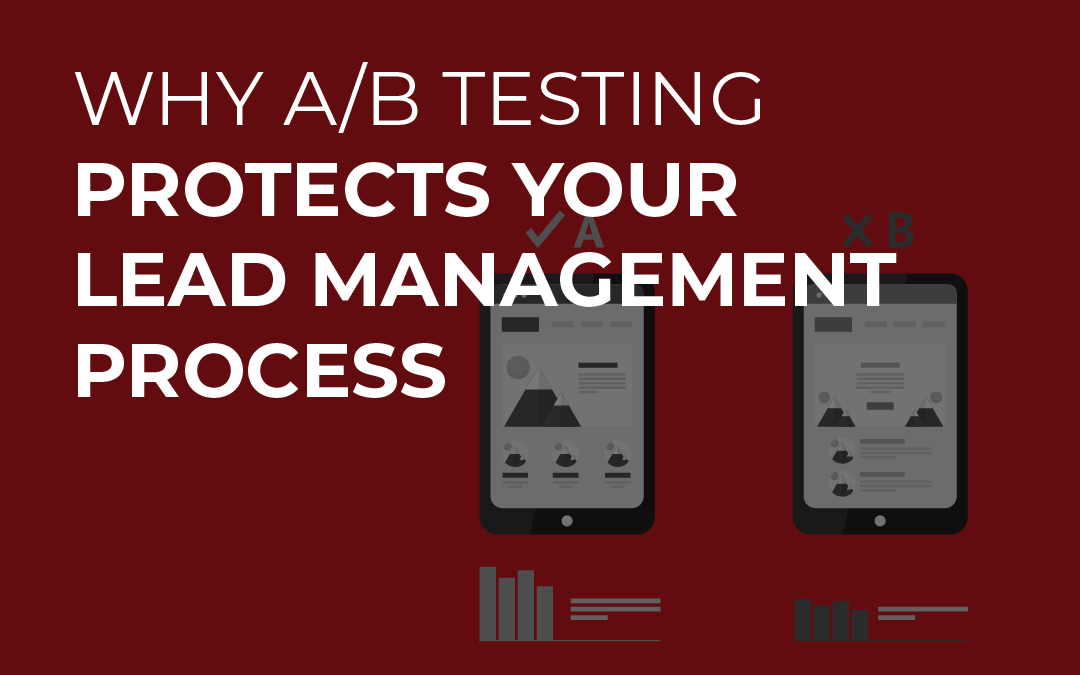You’ve been there before! You get a flood of new leads, your team’s excited. Then chaos takes over. Crap. Some leads get lost, others get the wrong follow- up message, then deals slip right through your fingers. Rinse, repease!
Guess what: this frustrating cycle happens because you don’t have a solid system for lead management! Here’s some hope for you: you can fix it (sounding a little like Fix-It Felix….).
A proper lead management system isn’t just a nice-to-have; it’s the engine that powers your sales growth, helping you avoid Wreck-It Ralph’s bad attitude. It also stops you from wasting marketing dollars and helps you build real relationships with potential customers. A systematic approach helps your business grow, and a platform like LeadBranch can totally change the game for you.

Table of Contents:
- What Exactly Is Lead Management? (And Why Should You Care?)
- The 5 Stages of an Effective Lead Management System
- Using Technology for Smarter Lead Management
- Common Mistakes to Avoid in Your Lead Management Strategy
- Conclusion
What Exactly Is Lead Management? (And Why Should You Care?)
Lead management is the process of capturing, tracking, qualifying, and nurturing leads until they buy something. Think of it as a roadmap that guides a curious visitor all the way to becoming a happy customer. Without this map, you’re just wandering in the dark, and your marketing efforts may be wasted.
Why does this matter so much? Because nearly 80% of new leads never turn into sales, according to Invespcro research. That’s a staggering number. A strong process for effective lead management makes sure your sales lead opportunities don’t get lost in a cluttered inbox or a messy spreadsheet.
It also means your sales team spends their time talking to people who are genuinely interested, not chasing dead ends. Good lead management helps you connect with the right person at the right time. This makes your entire sales process smoother and more profitable as you manage leads efficiently from the initial contact through the sales funnel.
The 5 Stages of an Effective Lead Management System
Getting your system right isn’t complicated. It just takes a clear, step-by-step process. Let’s break down the five stages that will transform how you manage lead flow from messy to magnificent.
Stage 1: Capturing Leads the Right Way
Everything starts with effective lead generation. This can happen through website forms, social media campaigns, or even in-person events. But just capturing them isn’t enough; you need to capture high-quality information from the very start to ensure you are collecting clean data.
It’s vital to handle this first-party data responsibly. Modern businesses must work closely with legal guidance to respect data privacy laws. Adhering to regulations like GDPR and CCPA is not optional and helps build trust with prospective customers from the initial contact.
Have you ever tested your lead forms? A simple A/B test, where you compare two versions of a form, can make a huge difference in your lead conversion results. A study by VWO showed that changing a form’s headline can increase conversions by over 30%. Test things like your call-to-action button text, offering a free trial, or the number of fields you ask people to fill out.
This is where using a platform like LeadBranch becomes incredibly helpful. It works as a central database, pulling all your leads into one place. This stops leads from getting scattered across different systems and forgotten.
Stage 2: Tracking and Enriching Your Leads
Once you capture a lead, you need to understand who they are. What pages did they visit on your website? What emails did they open? When you track lead activities, you get a much clearer picture of their interests and needs.

This detailed lead tracking lead information provides invaluable context for your sales teams. It shows what a potential customer is interested in before a sales rep even picks up the phone. This approach helps build a stronger connection from the very beginning.
But you can go even deeper. Lead enrichment is the process of adding more information to a lead’s profile. Think about knowing a lead’s marital status, credit score, or even if they own a home. This kind of data is pure gold for your sales team, especially for a longer sales cycle.
A good customer relationship management crm tool is essential for this. LeadBranch was built to do exactly this with its powerful database that helps with data appendices and cleaning your existing information. This gives your team the context they need to have meaningful conversations instead of just making cold calls.
Stage 3: Qualifying Leads (Separating the Gold from the Gravel)
Not all leads are created equal, and your team can waste time on the wrong ones. Lead qualification is the process of figuring out which leads are most likely to become customers. This saves your sales team from pursuing people who will never buy.
You need to develop criteria to identify who is a good fit for your product or service. This involves looking at their demographics, behavior, and stated needs. Qualifying leads early in the process ensures your sales pipeline is filled with genuine opportunities.
A common way to do this is with lead scoring. You assign points to leads based on their information and actions. For example, a Vice President at a large company might get more points than an intern because they have budget authority.
Here’s a simple look at what that might look like:
| Criteria | Points |
| Job Title: C-Level | +20 |
| Company Size: 500+ employees | +15 |
| Visited Pricing Page | +10 |
| Downloaded Ebook | +5 |
This process becomes so much easier with LeadBranch. You can filter your entire database based on customized demographic information like date of birth, age, or gender. This lets you build a perfect picture of your ideal customer and focus only on the best leads that convert.
Stage 4: Distributing Leads to the Right People
Speed is everything in sales. A study published by Forbes found that contacting a new lead within five minutes increases your chances of converting them by a huge amount. This is why you need a system to automatically send leads to the right salesperson instantly.
Effective lead distribution should be based on factors like territory, expertise, or even a salesperson’s current workload. This makes sure every lead gets fast attention from the sales rep best equipped to help them. A manual process just can’t keep up and often leads to missed opportunities.
Using marketing automation is critical for this stage. It saves time and removes the guesswork from the process. When a new lead comes in, the system automatically routes it to the correct person without any delay.
With a tool like LeadBranch, you can automate this entire process. You set the rules, and the platform handles the rest. This automation lets your team focus on selling and building relationship connections instead of administrative tasks.
Stage 5: Nurturing Leads Until They’re Ready to Buy
Most leads aren’t ready to buy the first time they contact you. Lead nurturing is the art of staying in touch and building a relationship with them over time. You give them helpful content until they are ready to make a decision.
This can be done through email marketing, content marketing, or even targeted text messages. Nurturing often involves using automated email sequences to deliver a series of helpful messages. The goal is to provide value and stay top-of-mind without being pushy.
Speaking of texting, you need to get the timing right. Sending a message at 3 AM because of a time zone mix-up is a quick way to lose a potential customer. Personalized emails and texts show you are paying attention to their needs and preferences.
LeadBranch was specifically designed to maximize time zone text messaging. You can schedule responder messages so they always arrive at the perfect time. This thoughtful communication shows leads that you respect their time and are genuinely there to help, which is crucial for a longer sales engagement.
Using Technology for Smarter Lead Management
Trying to manage all these stages manually is a recipe for disaster. This is where technology becomes your best friend. A good lead management software automates the boring stuff and gives your team superpowers.
Platforms like these function as excellent customer relationship management tools. They provide a central hub for all lead activities and communications. This single source of truth prevents miscommunication and ensures everyone is on the same page.
LeadBranch acts as the brain of your whole operation. It’s a powerful database that lets you filter for exactly what you need. Imagine you want to target homeowners between the ages of 30 and 45 with a high credit score. With LeadBranch, you can pull that list in seconds.
It also comes with a ton of powerful SMS features. You can see who clicked on your links, use pop-up fields to collect more information, and clean your data to make sure it’s accurate. This puts you in complete control of your lead management and turns your data into your biggest asset.
| Feature | Benefit of Lead Management Tools | Challenge of Manual Methods |
| Automation | Saves time on repetitive tasks and ensures instant follow-up. | Time-consuming, prone to human error, and slow response times. |
| Centralization | All lead data and interactions are in one place for easy access. | Data is scattered across spreadsheets, inboxes, and notes. |
| Data & Analytics | Provides clear insights into what’s working and what’s not. | Difficult to track metrics and make data-driven decisions. |
| Scalability | Easily handles a growing volume of leads without chaos. | Becomes unmanageable and breaks down as volume increases. |
Common Mistakes to Avoid in Your Lead Management Strategy
Even with the best intentions, it’s easy to make mistakes. One of the biggest is being too slow to follow up. If you wait hours or even days, you can bet a competitor has already reached out.
Another common problem is not having a clear process that your marketing team and sales teams agree on. When no one knows who is responsible for what, leads get dropped. You need lead management strategies that everyone on your team understands and follows to improve lead conversion.
Failing to align sales and marketing is another pitfall. Both teams must agree on the definition of a qualified lead and the handoff process. Without alignment, the marketing team may send over poor-fit leads, causing friction and frustration for sales reps.
Finally, many companies fail to track their results and key metrics like conversion rates. If you don’t know what’s working, you can’t improve it. Lead management software like LeadBranch gives you the analytics you need to see what’s going on and make smarter decisions.

Conclusion
Great lead management isn’t about luck. It’s about having a thoughtful process that you follow consistently. When you capture, track, qualify, and nurture your leads effectively, you build a powerful and predictable sales machine.
Stop letting good leads die on the vine and start building a system that turns them into loyal customers capable of withstanding Wreck-It Ralph’s onslaught. Good lead management is the foundation of a healthy, growing business. An effective lead will move through your sales process smoothly when you manage them with care.
Are you tired of sifting through unqualified leads? Do you want to reach the exact right person with the perfect message every time? Explore how LeadBranch can transform your lead management today. Filter your leads with incredible precision using data like birth date, age, marital status, and credit score, and use our powerful SMS tools to connect like never before.

